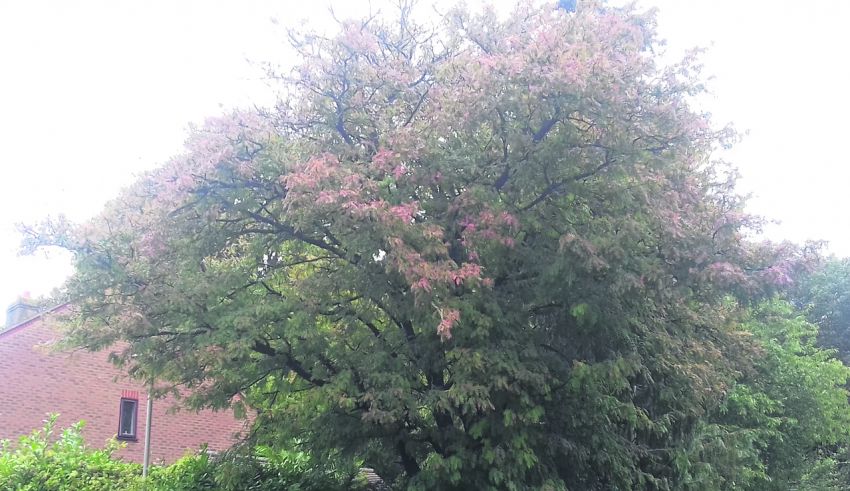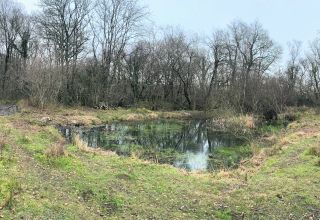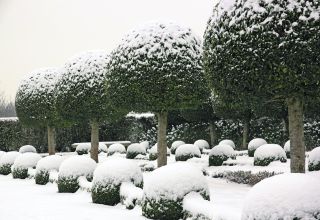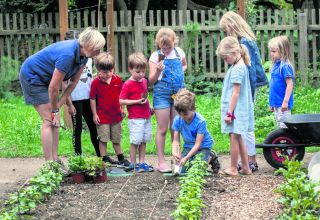
Mark Hinsley identifies a rare true service tree in Dorset but then debates whether it is native or not?
I was asked by the good people of the Blandford Environmental Trust to cast an eye over one of the areas they manage for community benefit called Angus Wood. Whilst we were there, they asked me to identify a tree on a street corner just next door to their wood, because nobody knew what it was.
The tree had leaves like a rowan, bark like a pear, fruit like an apple and was too big to be any of them! I thought some kind of service tree, but I had to check it out to be sure.
It turned out to be a Sorbus domestica or true service tree, and it has a bit of a story to it.
Most authorities will tell you that the true service tree is a rare tree with a natural distribution across central and southern Europe. Its true distribution is acknowledged to be unclear because the Romans are known to have cultivated and distributed it. The tree produces good, tough, dense wood suitable for mechanical parts and the fruits can be used to make jams, juices, alcoholic drinks and traditional medicines. It is also a very pretty tree. However, due to its rarity, none of these uses has any commercial value.
Service trees, our native wild service tree (Sorbus torminalis) included, are amongst nature’s oddball eccentrics. They are rare because they seem to want to be. They do not cope well with competition from other trees, they set very little viable seed and they are very picky about where they will germinate.
Wild service trees growing naturally in this country, as opposed to being planted by some misguided enthusiast worried about their rarity, are indicators of ancient woodland because they will not germinate anywhere else. If you find one growing naturally in a hedgerow, you know that hedge was once part of an ancient wood.
 However, what a true service tree was doing growing on a street corner in Blandford Forum, Dorset, I have absolutely no idea.
However, what a true service tree was doing growing on a street corner in Blandford Forum, Dorset, I have absolutely no idea.
According to Stephen Harris writing on an Oxford University website, two of the oldest trees in the Oxford Botanic Garden are service trees. One of these trees is thought to have been planted in 1780 by a Professor John Sibthorp. Apparently, he obtained seed from a true service tree that was discovered in the Wyre Forest (Worcestershire) in 1678, which was believed to be the only one in the country. This tree was destroyed by fire in 1862. Another name for the true service tree is the ‘Whitty Pear’.
Most textbooks will tell you that the true service tree is not a native. However, an article on the website of Porthkerry & Rhoose begs to differ, as does The New Sylva by Gabriel Hemery & Sarah Simblet (2014). They report that a wild population of true service trees was found in 1983 growing on inaccessible ledges on sea cliffs in South Glamorganshire, where they were unlikely ever to have been planted.
That the tree had been around before the Wyre Forest specimen is apparently suggested in Nennius’ Historia Brittonum of 829 AD which records: ‘By the river called Guoy (Wye), apples may be found on an ashtree, growing in the steep wood near the mouth of the river’.
According to The New Sylva, since the discovery in 1983, about 30 trees have since been recorded across other sites in southern England and Wales.
My question to you is this: do we know of any more? If you know of one, email markhinsley@treeadvice.info; let’s see what is out there.
Mark Hinsley is from Arboricultural Consultants Ltd www.treeadvice.info










